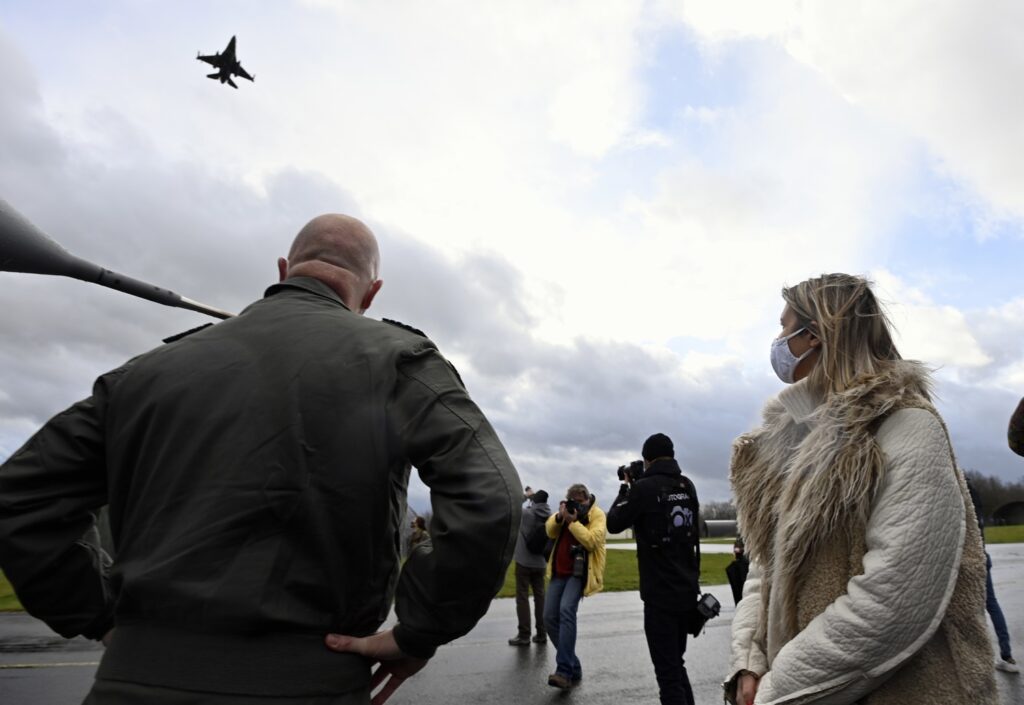The Belgian government on Friday approved a Security, Service, Technology, Ambition, Resilience (STAR) Plan for the Defence sector and the updating of the military programming law (LPM).
This entails over €10 billion in investments – including the purchase of heavy and light helicopters, drones and additional armoured vehicles, according to Defence Minister Ludivine Dedonder
“The STAR plan and the updating of the LPM are crucial steps for the reconstruction and consolidation of Defence,” the minister said in a statement.
Defence budget to be increased to €7 billion by 2030
The plan confirms the objective of increasing the number of civilian and military staff in the Defence sector to 29,000 by 1 January 2030 – up from around 27,600 today – and raising its budget from €4.8 billion this year to €7.0 billion by 2030.
It also provides for numerous equipment purchases, including 15 light utility helicopters and eight to ten heavy helicopters, to replace the current Agusta A109s, about 10 of which are still in service, and the four NH90 tactical transport helicopters.
Other purchases will include four new search and rescue helicopters, five special forces support aircraft, three light transport aircraft and two additional MQ-9B SkyGuardian drones to bring their number to six.
Related News
No additional F-34 fighter jets
However, the plan rules out ordering additional F-34 fighter jets beyond the 34 to be delivered between 2023 and 2030 to replace the ageing F-16s and a third anti-submarine frigate for the Navy.
The two ships to be built in the Netherlands will, however, have a defence capability to counter ballistic missiles. The Navy should also get a mine-laying platform.
The plan drawn up by the minister with the help of the general staff also envisages the acquisition of two anti-aircraft missile batteries, one short-range (SAM SR) and one long-range (SAM LR), as well as C-UAS systems for detecting, identifying and neutralising small drones.
The land component will see the return of the cavalry with the delivery of Jaguar wheeled armoured vehicles from the French CaMo (Motorised Capacity) programme that will equip two battalions.
Second medical battalion
A new Belgian-Luxembourg reconnaissance battalion will be created by 2028, alongside four existing infantry battalions. The 'khakis' will also be equipped with a very short-range anti-aircraft capability and C-UAS, as well as new armoured engagement vehicles (AEVs).
The AEVs will be supplied through a programme conducted with France under the aegis of the Organisation for Joint Armament Cooperation.
The medical component will be equipped with a second medical battalion and will keep its new field hospital, known as 'role 2' in NATO terminology.
According to Minister Dedonder, the current geopolitical context – marked in particular by Russia’s invasion of Ukraine – “confirms the analyses and choices made in the STAR plan and shows how indispensable this process was.”
‘... a coherent, responsible and credible policy’
“At the end of a long process of preparation and discussion, we have reached the goal: to give Belgium a department fully capable of ensuring the security of Belgians at home and abroad thanks to a coherent, responsible and credible policy,” added Mrs. Dedonder (PS).
“More than an update, the next military programming law allows us to start a major turning point in a new dynamic with more than €10 billion of investments,” supported by a defence-budget growth trajectory that foresees devoting 1.55% of GDP, in 2030, to the defence effort – a concept broader than the ministry’s budget alone, she said.
NATO is asking Member States to aim for 2% by 2024.

